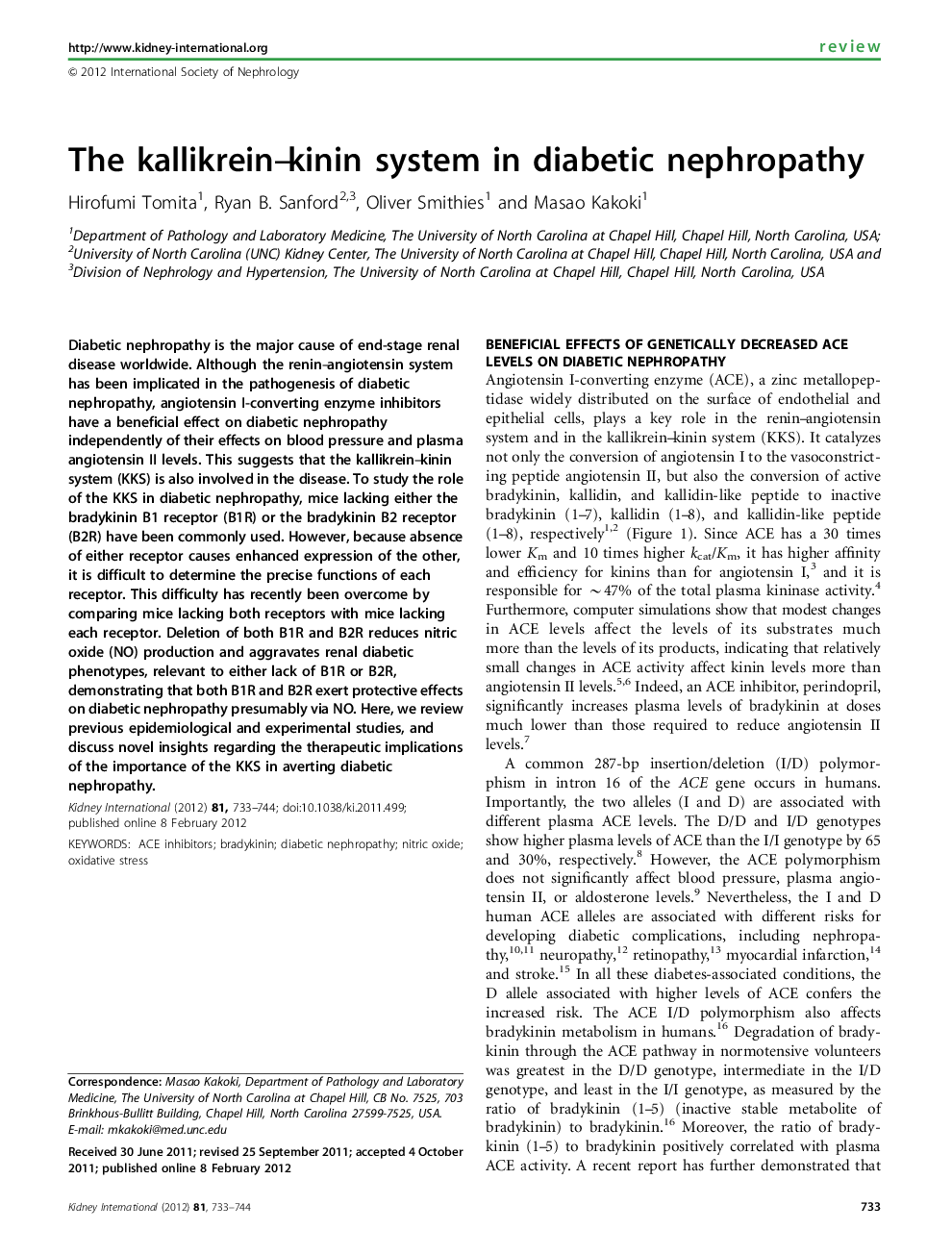| کد مقاله | کد نشریه | سال انتشار | مقاله انگلیسی | نسخه تمام متن |
|---|---|---|---|---|
| 3883207 | 1249405 | 2012 | 12 صفحه PDF | دانلود رایگان |

Diabetic nephropathy is the major cause of end-stage renal disease worldwide. Although the renin–angiotensin system has been implicated in the pathogenesis of diabetic nephropathy, angiotensin I-converting enzyme inhibitors have a beneficial effect on diabetic nephropathy independently of their effects on blood pressure and plasma angiotensin II levels. This suggests that the kallikrein–kinin system (KKS) is also involved in the disease. To study the role of the KKS in diabetic nephropathy, mice lacking either the bradykinin B1 receptor (B1R) or the bradykinin B2 receptor (B2R) have been commonly used. However, because absence of either receptor causes enhanced expression of the other, it is difficult to determine the precise functions of each receptor. This difficulty has recently been overcome by comparing mice lacking both receptors with mice lacking each receptor. Deletion of both B1R and B2R reduces nitric oxide (NO) production and aggravates renal diabetic phenotypes, relevant to either lack of B1R or B2R, demonstrating that both B1R and B2R exert protective effects on diabetic nephropathy presumably via NO. Here, we review previous epidemiological and experimental studies, and discuss novel insights regarding the therapeutic implications of the importance of the KKS in averting diabetic nephropathy.
Journal: Kidney International - Volume 81, Issue 8, 2 April 2012, Pages 733–744